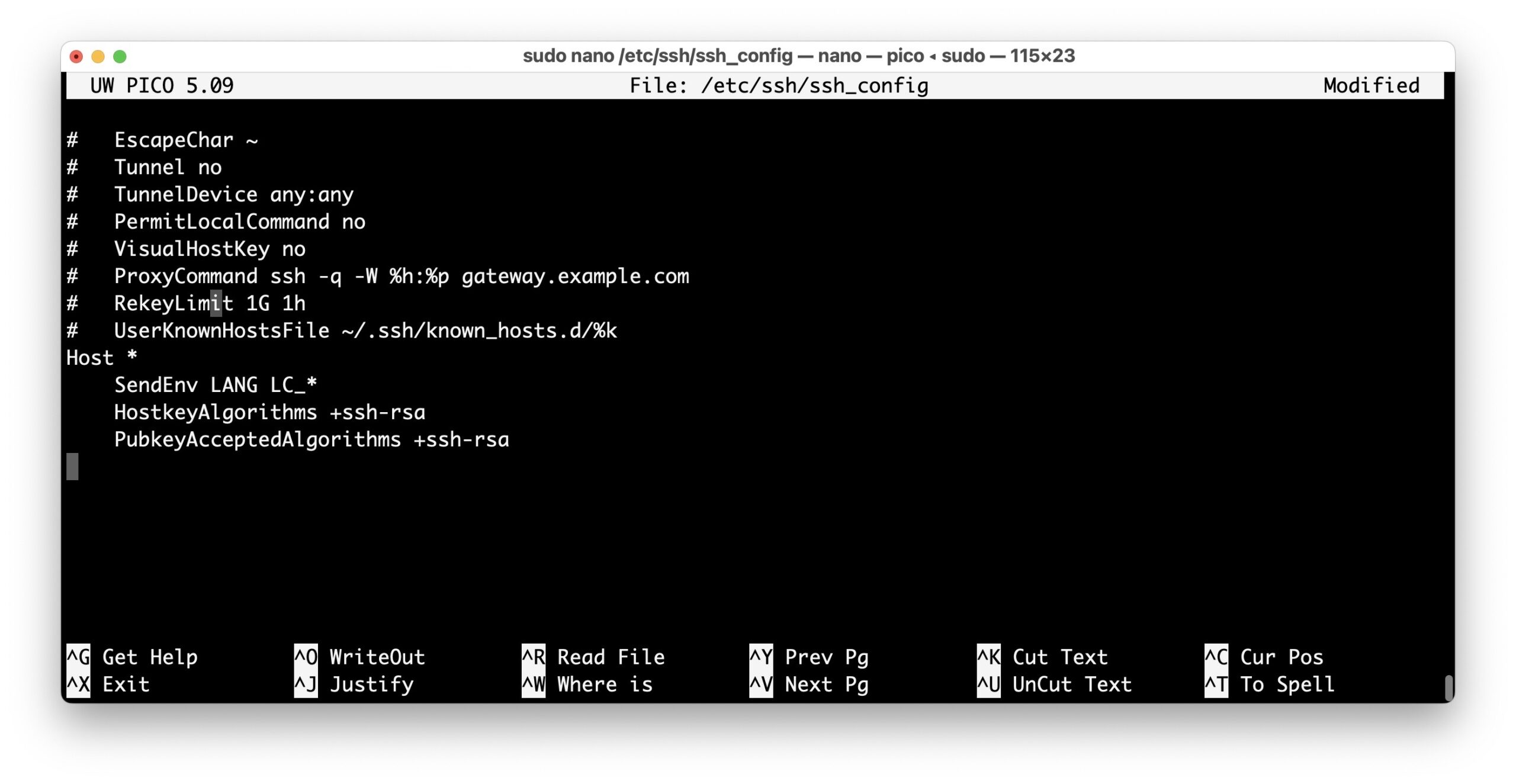Securely Connect Remote IoT P2P SSH Download Android: Your Simple Guide
Connecting to your smart gadgets and devices from far away can feel like a tricky business, especially when you need things to stay private and safe. Maybe you have a camera at home, a sensor in your garden, or a tiny computer doing something important, and you want to check on it or give it instructions without any worries. It's a bit like needing to send very important financial papers or confidential files to someone; you want to be absolutely sure no one else can peek at them, right? That feeling of needing a truly secure way to share or access things is pretty common for many of us, honestly.
Many folks worry about how their information travels across the internet, particularly when it involves personal or business matters. You might have experienced issues where a site just stops working, saying it "cannot connect securely to this page," or maybe you've wondered if an email you sent really was private, even if you tried to make it so. These kinds of connection hiccups and security questions can make anyone a little uneasy, and understandably so. Getting a clear confirmation that your data is protected is a big deal, and sometimes, you know, that confirmation isn't always easy to find.
This guide will walk you through how to securely connect to your remote IoT devices using P2P SSH, all from your Android phone or tablet. We'll look at why this method is a good choice for keeping things safe, what you'll need to get started, and some straightforward steps to make it happen. You'll learn about picking the right tools and how to keep your connections private, so you can feel good about managing your smart devices from anywhere, pretty much.
- Pok%C3%A9mon Odyssey
- Hannah Wilcox Ricketts
- Aishah Sofey Content
- Is Emily Compagno Married
- Iran Live Cameras
Table of Contents
- Understanding IoT Remote Access Needs
- Why P2P SSH for IoT?
- Getting Ready: What You Need
- Finding the Right Android App
- Step-by-Step Connection Process
- Troubleshooting Common Connection Issues
- Beyond SSH: Other Security Thoughts
Understanding IoT Remote Access Needs
Internet of Things, or IoT, refers to everyday objects that can connect to the internet. Think about your smart thermostat, a home security camera, or even a fancy coffee maker. These devices gather and send information, and sometimes, you need to reach them from a distance. For example, you might want to check if your front door is locked while you're away, or maybe turn on your lights before you get home, honestly.
The main reason people want to reach these devices remotely is for convenience and control. It's pretty nice to manage things without being right there. However, when you open up a device to the internet, you also open it up to potential risks. Just like when you're trying to share sensitive business papers, you want to be sure that only the right eyes see them, you know?
So, a big part of using IoT devices is making sure that any connection you make to them is private. This means keeping unwanted visitors out and making sure the information exchanged stays unreadable to anyone else. It's about protecting your home, your data, and your peace of mind, basically.
- Desmond Doss The Unyielding Spirit Of A Conscientious Objector
- Discovering The Multitalented Max Minghella An Artistic Journey
- Asianbunnyx Leaks
- Sowte Ifsa
- Morgan Wallen Setlist Miami
Why P2P SSH for IoT?
SSH stands for Secure Shell, and it's a way to get into a computer or device over an unsecured network, but in a very safe way. It creates a private path for your commands and data, so everything you send back and forth is kept secret. This is really important, especially when you're dealing with devices that might have sensitive information or control important functions, as a matter of fact.
Now, P2P, or peer-to-peer, means that your Android phone connects directly to your IoT device, without needing a middle server to handle the connection. This can be simpler to set up in some cases and might even feel a bit more direct. When you combine P2P with SSH, you get a direct, private link between your phone and your smart device, which is pretty cool.
The main benefit here is the strong security that SSH provides. It's like having a special, locked tunnel for your information. This helps prevent people who shouldn't be there from listening in or messing with your devices. For anyone concerned about their digital privacy, this combination offers a solid way to keep things under wraps, so to speak.
Getting Ready: What You Need
Before you start making these secure connections, you'll need a few things in place. First, you'll need your IoT device, of course. This could be a Raspberry Pi, an ESP32, or any other smart gadget that can run an SSH server. Make sure it's turned on and connected to your home network, or whatever network it normally uses, anyway.
Next, you'll need your Android phone or tablet. This will be the device you use to send commands and check on your IoT gadget. Make sure your Android device has enough battery life and a stable internet connection, whether it's Wi-Fi or mobile data, you know.
You'll also need to know a bit about your network setup. This includes things like your IoT device's network address, sometimes called an IP address. You might need to adjust some settings on your home router, like setting up port forwarding or understanding how your network handles direct connections, which can be a little bit technical for some, but it's often necessary.
Finding the Right Android App
To connect to your IoT device using SSH from your Android, you'll need a special app. There are many SSH client apps available on the Google Play Store. When you're looking for one, consider a few things. You want an app that is easy to use, has good reviews, and is regularly updated. An app that hasn't been updated in a long time might not be as secure or work as well with newer Android versions, as a matter of fact.
Some popular choices include "Termux" for a full Linux command line experience, or more dedicated SSH clients like "ConnectBot" or "JuiceSSH." Each one offers a slightly different set of features, so it's a good idea to try a couple out to see which one feels best for you. Look for features like key management, which lets you use special digital keys instead of just passwords for an extra layer of security, which is pretty important.
Also, check if the app supports "port forwarding" or "tunneling" if you think you'll need those more advanced features later on. This allows you to send other types of network traffic through your secure SSH connection. Picking a good app is a big step in making this whole process smooth and reliable, so take your time, you know?
Step-by-Step Connection Process
Setting Up SSH on Your IoT Device
The very first step is to make sure your IoT device is ready to accept SSH connections. For many Linux-based IoT devices, like a Raspberry Pi, SSH might already be turned on, or it's easy to activate. You'll usually do this by connecting a screen and keyboard to the device, or by accessing it through another computer on your local network. You'll need to install an SSH server if it's not already there, which is a fairly simple command, for example, something like `sudo apt-get install openssh-server` on a Debian-based system, actually.
Once the SSH server is running, you'll need to know the device's username and password. It's really important to change the default password right away if there is one. Default passwords are a big security risk, honestly. Think of it like leaving your front door unlocked; you just wouldn't do it. A strong, unique password makes a huge difference in keeping your device safe from unwanted access, you know?
Finally, make sure your IoT device has a fixed network address, or at least one that doesn't change often. This will make it much easier for your Android app to find and connect to it every time. If your device's address keeps changing, you'll have trouble connecting reliably, which is pretty frustrating, to be honest.
Configuring the Android App
Now, open the SSH client app you downloaded on your Android phone. You'll typically find a place to add a new connection. Here, you'll put in the network address of your IoT device. This is the address you found in the previous step, of course.
You'll also need to enter the username for your IoT device. This is usually something like "pi" for a Raspberry Pi or a custom username you set up. Then, the app will ask for the password. Remember, use the strong, unique password you set for your IoT device, not the default one. Some apps also let you save this information, but for maximum security, you might prefer to enter it each time, or even better, use SSH keys, which we'll touch on in a moment, basically.
If your IoT device uses a different SSH port than the standard one (port 22), you'll need to specify that in the app's settings too. This is a good security practice, as it makes it a bit harder for automated scans to find your SSH server, so it's worth considering, really.
Making the P2P Connection
With your IoT device ready and your Android app configured, you're ready to try connecting. Tap the "connect" button in your SSH app. If everything is set up correctly, you should see a command line interface appear on your Android screen. This means you're now securely connected to your IoT device, and you can start typing commands as if you were sitting right in front of it, which is pretty cool, you know?
For a true P2P connection across different networks (like connecting from your phone's mobile data to your home IoT device), you might need to set up "port forwarding" on your home router. This tells your router to send incoming SSH requests from the internet directly to your IoT device. This can be a bit tricky, as it involves changing router settings, but there are many guides online for specific router models, honestly.
Alternatively, some services offer secure tunnels that simplify P2P connections without needing router changes. These services create a secure path for you, which can be much easier for many people. Just make sure to pick a reputable service if you go this route, as a matter of fact.
Security Best Practices
Keeping your connections safe is paramount. First, always use strong, unique passwords for your SSH connections. A mix of letters, numbers, and symbols, and a good length, makes them very hard to guess. Never use simple passwords, you know, like "123456" or "password."
Even better than passwords are SSH keys. These are like very long, complex digital fingerprints that only your Android phone and your IoT device share. Setting them up can be a little more involved, but once they're in place, they offer a much higher level of security. It's like having a super secret handshake that only your devices know, which is pretty neat, arguably.
Also, keep your Android SSH app and your IoT device's software updated. Software updates often include important security fixes that protect against newly discovered vulnerabilities. Regularly checking for and applying these updates is a simple but very important step in keeping everything secure, so it's something you should definitely do, really.
Troubleshooting Common Connection Issues
Sometimes, despite your best efforts, you might run into problems connecting. You might see messages like "cannot connect" or "connection refused." This is pretty similar to when you try to log into a secure page and get a message about outdated or unsafe TLS security, you know? It means something is stopping the secure handshake.
First, double-check the network address of your IoT device. Is it correct? Has it changed? Also, make sure the SSH server is actually running on your IoT device. A simple restart of the device can sometimes fix this, honestly. You can also try to ping the IoT device from your Android phone to see if they can even "see" each other on the network, which is a good first check.
If you're trying to connect from outside your home network, the issue is often with your router's port forwarding settings. Make sure the correct port is open and directed to the right device. Firewalls on either your Android phone or the IoT device can also block connections, so check those settings too. Patience and systematic checking usually help you figure out what's going on, basically.
Beyond SSH: Other Security Thoughts
While SSH provides a strong, private connection for control, securing your IoT setup goes a bit further. Just like you want to confirm a secure email was truly secure, you want to be sure your entire IoT system is safe. Consider using a virtual private network, or VPN, for your home network. A VPN can add another layer of privacy by encrypting all traffic going in and out of your home, making it harder for anyone to snoop on your devices, you know?
Also, be very careful about the information your IoT devices collect and where they send it. Some devices might send data to cloud services, and you should understand their privacy policies. It's like sharing important files between companies; you want to know who has access and how they're protecting it, as a matter of fact. You can learn more about secure data handling on our site, which might be helpful.
Finally, always buy IoT devices from reputable manufacturers. Companies that care about security will release updates and have clear privacy statements. Avoiding cheap, unknown brands can save you a lot of headaches later on. Think about it like picking a trusted service for securely sharing large confidential files; you want reliability and peace of mind. And for more insights on keeping your digital interactions safe, you might want to check out this page about digital privacy, too it's almost a necessity in today's world.
Frequently Asked Questions
How can I tell if my SSH connection is truly secure?
When you first connect, your SSH client app should show you a "fingerprint" of the server. You should verify this fingerprint with the one on your IoT device. If they match, you're connecting to the right device. Also, the SSH protocol itself is designed to be very secure, using strong encryption to protect your data during transfer, so that's a good sign, honestly.
Can I use SSH to transfer files to my IoT device from Android?
Yes, you absolutely can. Most SSH client apps on Android also support secure file transfer protocols like SCP (Secure Copy Protocol) or SFTP (SSH File Transfer Protocol). These work over your secure SSH connection, letting you send or receive files from your IoT device privately, which is pretty convenient, you know?
What if my IoT device doesn't have SSH built-in?
If your IoT device doesn't come with SSH, you might not be able to add it easily, especially if it's a very simple, closed system. For more flexible devices, like those running a version of Linux, you can usually install an SSH server. For simpler devices, you might need to look into other remote access methods that the manufacturer provides, but they might not offer the same level of security, as a matter of fact.
Connecting to your remote IoT devices securely from your Android phone using P2P SSH is a smart move for anyone who cares about privacy and control. By understanding the basics, picking the right tools, and following some simple security steps, you can feel confident managing your smart gadgets from just about anywhere. It's about taking control of your digital world and making sure your connections are as private as your most important documents, really.



Detail Author:
- Name : Mr. Lorenza Cormier
- Username : russell68
- Email : damore.amber@romaguera.com
- Birthdate : 1973-07-14
- Address : 9157 Hickle Forges Apt. 618 Lake Lela, MD 70672-7393
- Phone : (252) 354-8036
- Company : Hermiston-Crona
- Job : Desktop Publisher
- Bio : Excepturi quis dolor quae consequuntur. Rem recusandae possimus quia adipisci. Suscipit laboriosam sed quia aut temporibus iusto impedit repudiandae. Adipisci nemo nostrum consequatur nobis.
Socials
tiktok:
- url : https://tiktok.com/@bogan2017
- username : bogan2017
- bio : Dignissimos occaecati odio perferendis ipsam.
- followers : 258
- following : 2151
linkedin:
- url : https://linkedin.com/in/alanna.bogan
- username : alanna.bogan
- bio : Maiores dolores aut quasi sint.
- followers : 787
- following : 1931